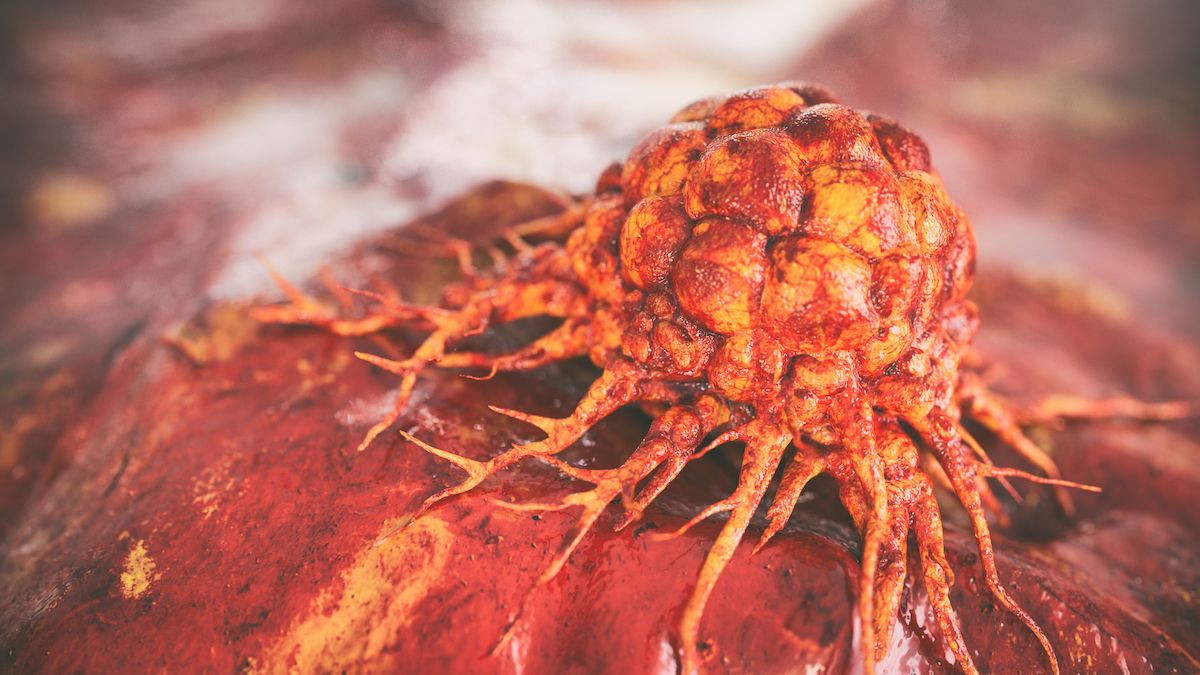Darolutamide Shows Potential in Treating AR-Positive Salivary Gland Cancer
With no standard treatment available, darolutamide shows potential activity among patients with androgen receptor–positive salivary gland cancer in the phase 2 DISCOVARY trial.
Treatment with darolutamide (Nubeqa) demonstrated clinically meaningful activity across secondary end points, with a well-tolerated safety profile, in patients with androgen receptor (AR)–positive salivary gland cancer, according to data from the phase 2 DISCOVARY trial (NCT05694819) that was presented at the 2023 American Society of Clinical Oncology (ASCO) Annual Meeting.
“This is the first prospective trial of darolutamide for AR-positive [salivary gland cancer],” Susumu Okano, MD, PhD, said. “Although the primary end point was not met, darolutamide monotherapy demonstrated clinically meaningful activity with [objective response rate (ORR) by independent center review of 20.8% with a well-tolerated safety profile.”

“There is no standard treatment for recurrent/metastatic or unresectable locally advanced salivary gland cancer,” Susumu Okano, MD, PhD, of the National Cancer Center Hospital East, Japan, said during a presentation of the data. “Androgen receptor overexpression is known to be particularly high in salivary duct carcinoma, depending on histology and has been identified as a potential molecular target for salivary gland cancer.”
Therefore, the trial aimed to assess the efficacy and safety of darolutamide, a second generation oral androgen receptor inhibitor, in patients with AR-positive salivary gland cancers. At ASCO, Okano reported on data from the monotherapy portion of the trial.
DISCOVARY Outcomes
No patients experienced a complete response (95% CI, 0.0%-14.2%), while 2 patients experienced a partial response (8.3%; 95% CI, 1.0%-27.0%), 11 were reported to have stable disease (45.8%; 95% CI, 25.6%-67.2%), 9 had progressive disease (37.5%; 95% CI, 18.8%-59.4%), and 2 patients were not evaluable (8.3%; 95% CI, 1.0%-27.0%). The ORR was just 8.3% (90% CI, 1.5%-24.0%); however, the ORR by independent central review (ICR) was 20.8% (95% CI, 7.1%-42.4%).
The clinical benefit rate (CBR) was 41.7% (95% CI, 22.1%-63.4%) and the disease control rate (DCR) was 58.3% (95% CI, 36.6%-77.9%).
Further, progression-free survival (PFS) was 5.7 months (95% CI, 1.9-15.2), while the overall survival (OS) was not evaluable (NE; 95% CI, 15.5-NE).
Lastly, grade 1/2 adverse events (AEs) that occurred at a frequency of 10% or more included gynecomastia (20.9%), nausea (16.7%), and constipation, eczema, fatigue, fever, aspartate aminotransferase increase, Alanine Transaminase increase, and anemia (12.5% each). Grade 3 lymphocytopenia, neutropenia, edema, GTP increase, anaphylactic shock, shingles, urinary tract infection, drug rash, arthritis, and rhabdomyolysis occurred in 1 patient each (4.2%). One patient each experienced grade 4 lymphocytopenia and laryngeal edema (4.2%).
“This is the first prospective trial of darolutamide for AR-positive [salivary gland cancer],” Okano said. “Although the primary end point was not met, darolutamide monotherapy demonstrated clinically meaningful activity with [objective response rate (ORR) by independent center review of 20.8% with a well-tolerated safety profile.”
DISCOVARY Background
In total, 24 patients were administered 600 mg darolutamide twice daily until disease progression or unacceptable toxicity.
Investigator-assessed ORR by RECIST criteria served as the study’s primary end point. Secondary end points included ORR by ICR, CBR, DCR, PFS, OS, and safety.
Key eligibility criteria included salivary gland cancer that was confirmed to be AR positive by the central laboratory; unresectable, progressive metastatic or locally advanced disease; evaluable tumor lesion by enhanced CT or MRI scan; no carcinomatous meningitis or symptomatic brain metastasis; ECOG performance status of 0 to 2; adequate organ function; and written informed consent.
Median age was 64.5 years (range, 35-79). The majority of patients were male (n = 23), with a performance score of 1 (n = 18) and AR positivity of 70 or greater (n = 23). Further, 23 patients had metastatic disease, with most sites occurring in the lung (n = 17). Previous treatments among patients included surgery (n = 20), radiotherapy (n = 17), and chemotherapy (n = 15).
In the combination portion of the trial, Okano and colleagues are evaluating darolutamide in combination with goserelin (n = 32). “Patient enrollment to the combination component is now ongoing to evaluate additional benefits,” he concluded.
Reference
Okano S, Tahara M, Imamura Y, et al. Darolutamide for patients with androgen receptor positive salivary gland cancers (DISCOVARY): the results of phase 2 study of darolutamide monotherapy. J Clin Oncol. 2023;41(16):6093. doi:10.1200/JCO.2023.41.16_suppl.6093.